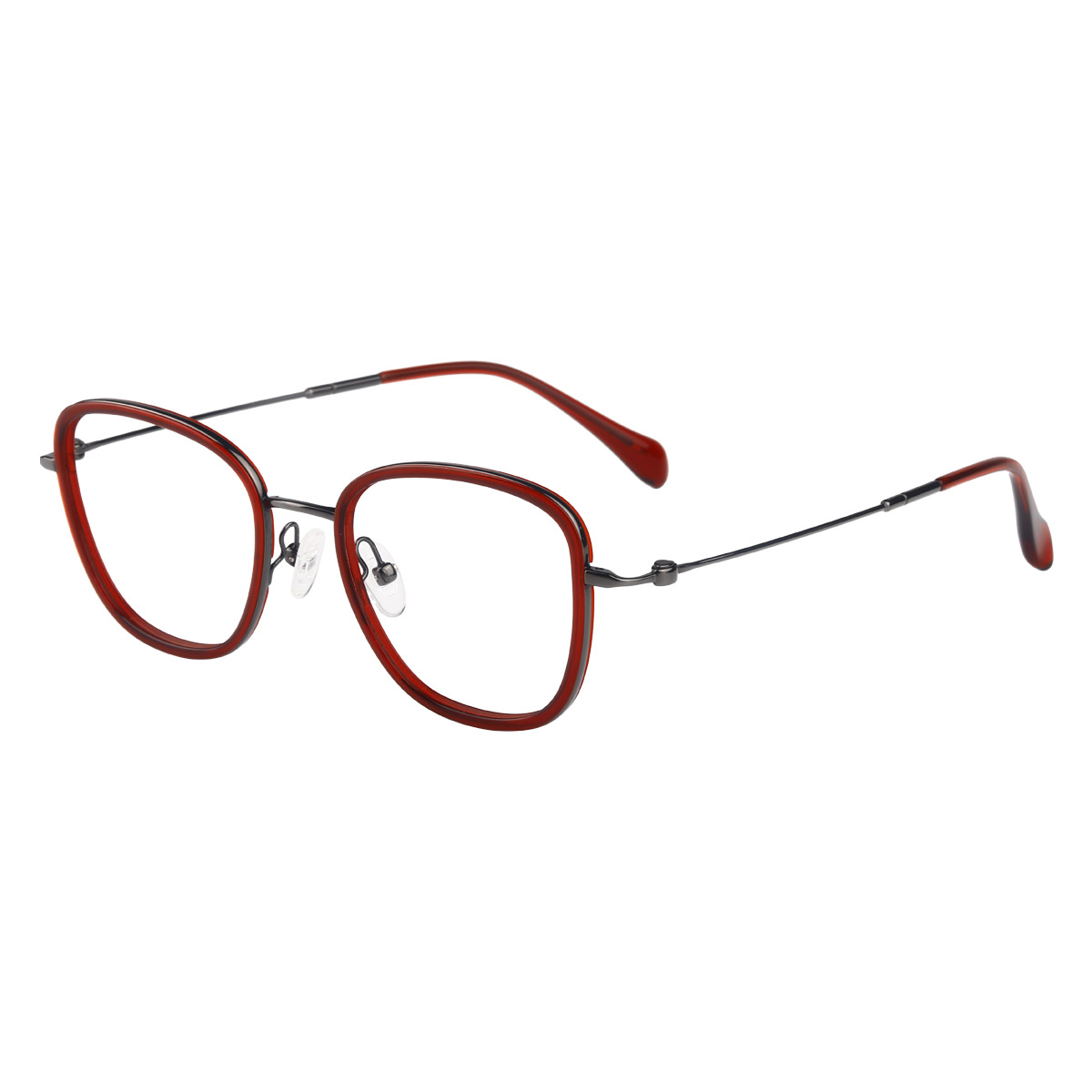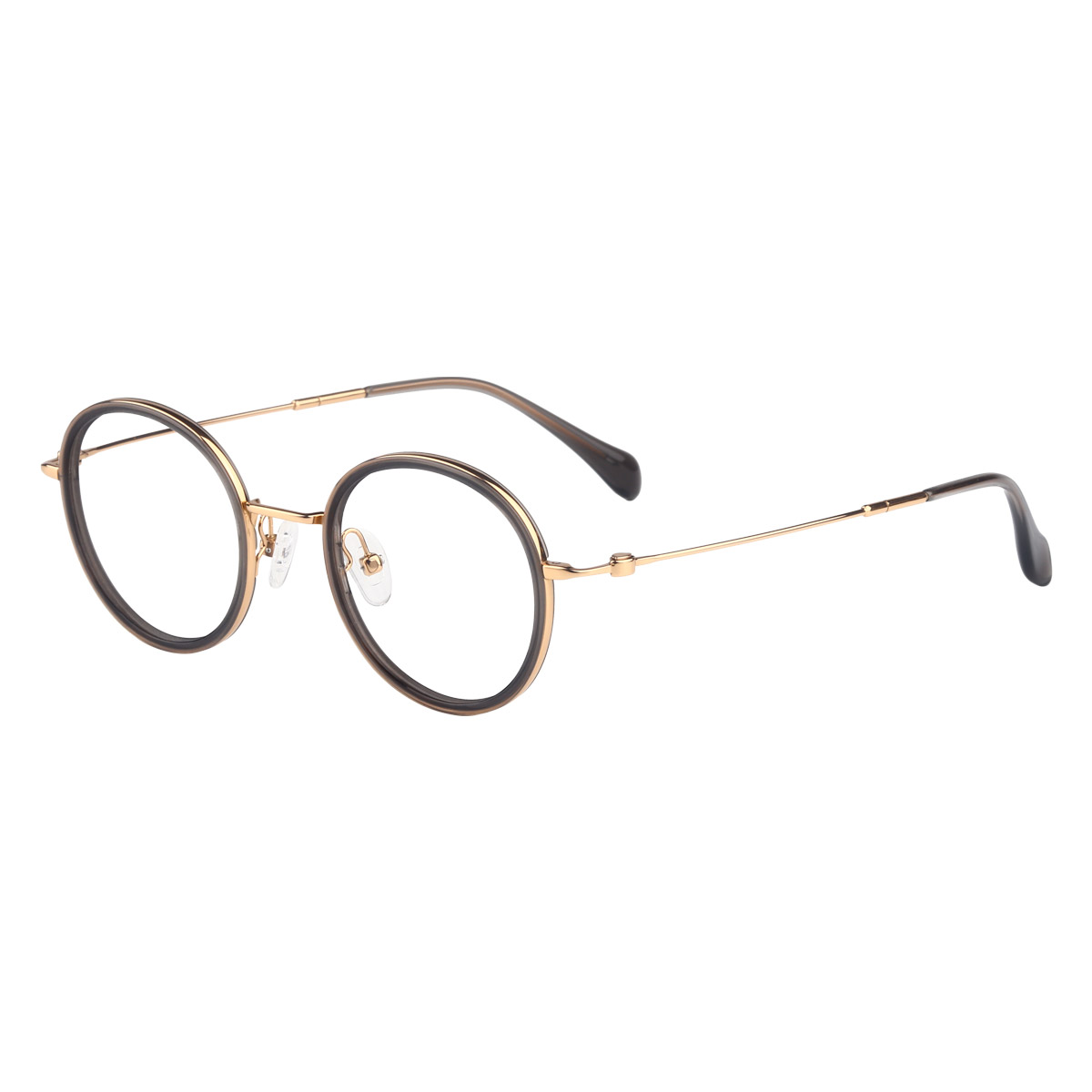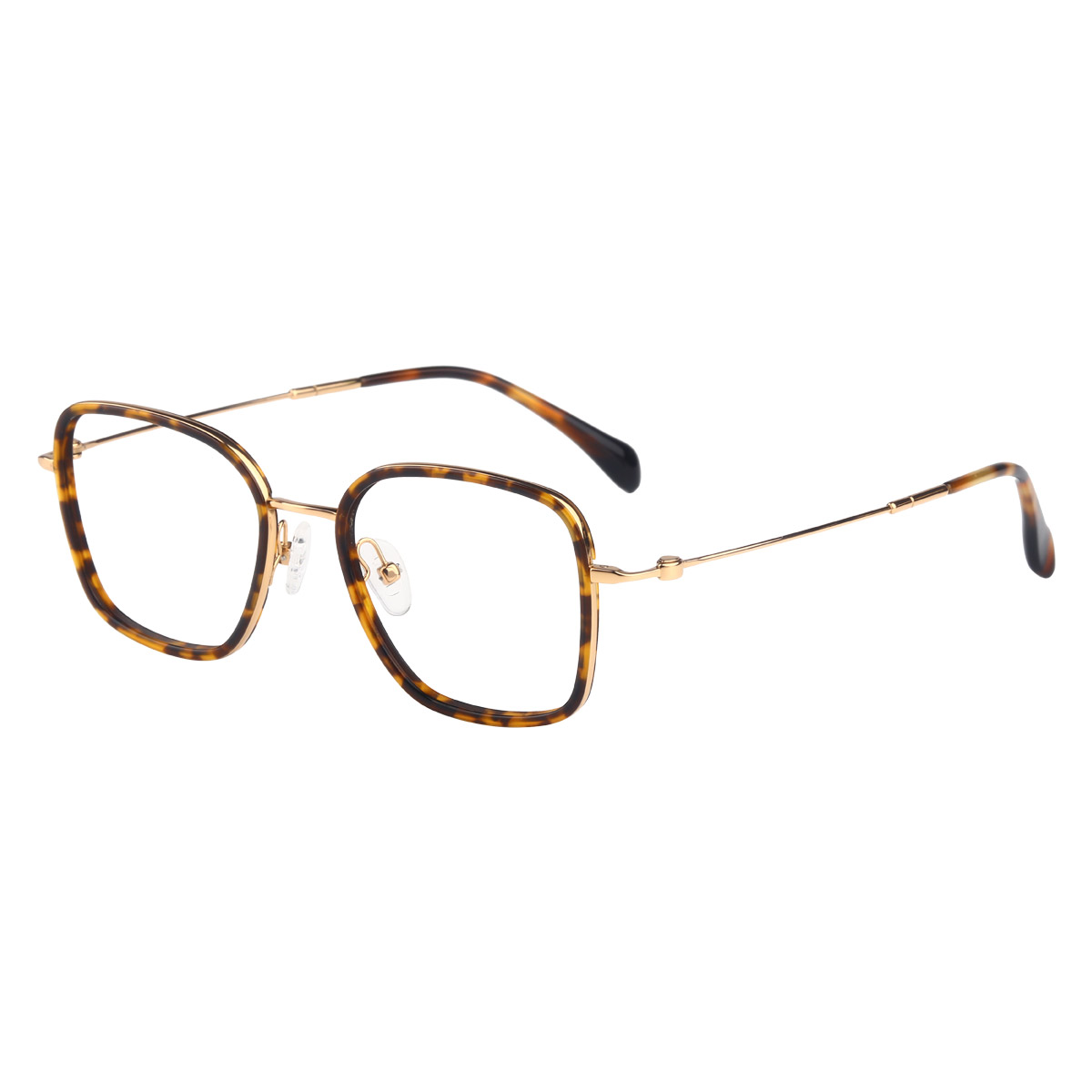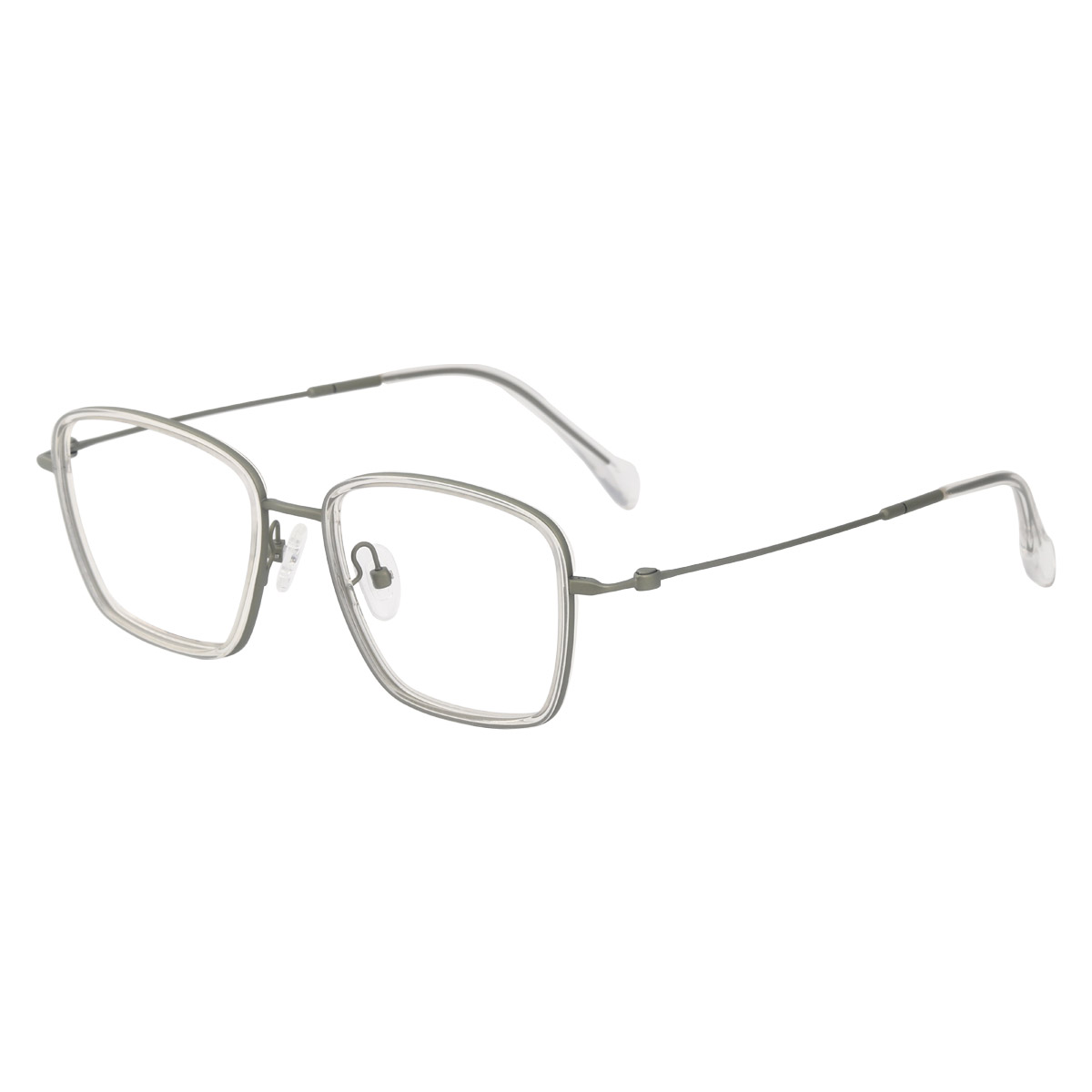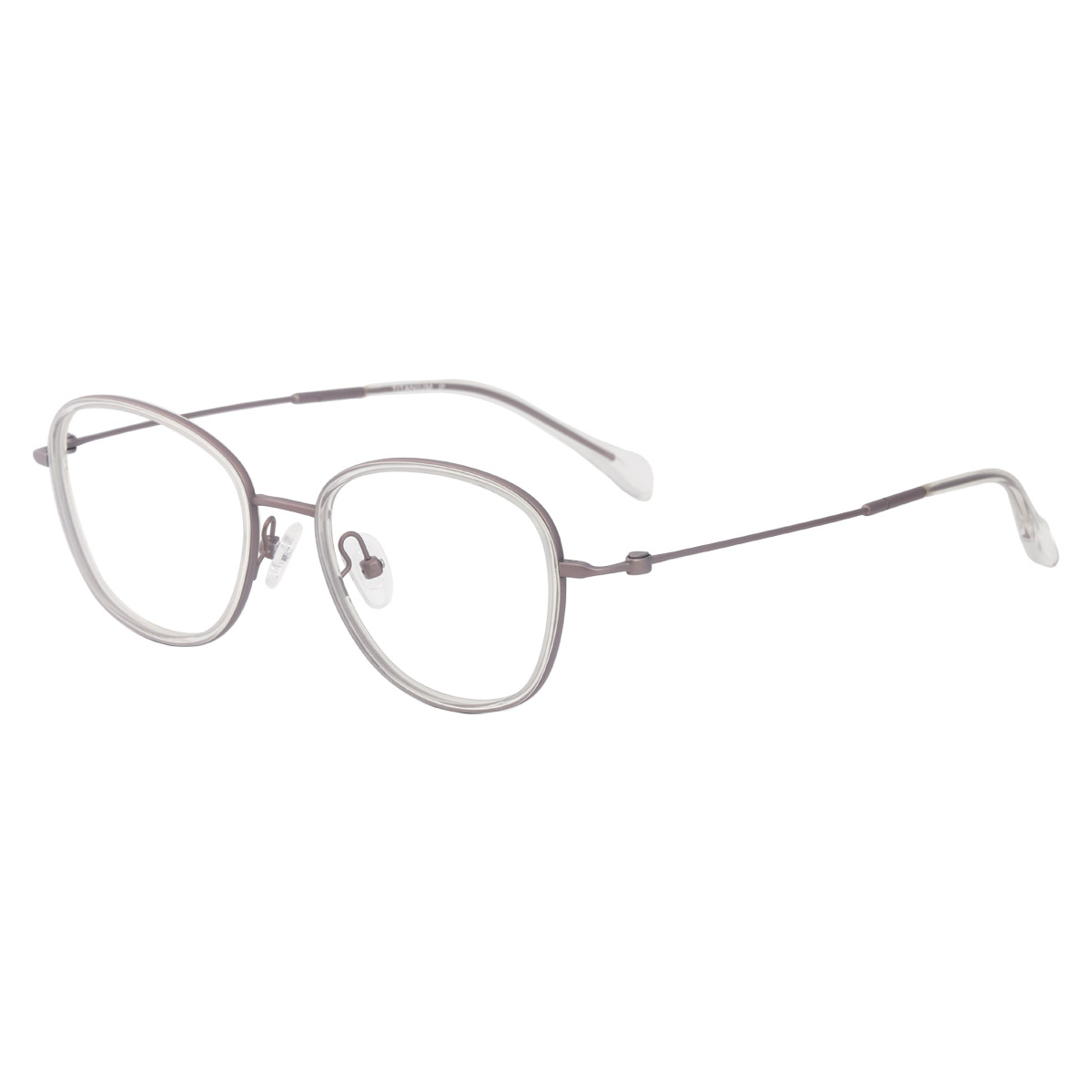The integration of advanced eyewear materials represents a pivotal development in optical technology. Titanium+ acetate optical glasses exemplify this evolution, combining the robustness of metallic elements with the aesthetic versatility of organic compounds.Zhejiang Qiliang Optical Technology Co., Ltd., as a leader in polymer innovation, contributes substantially to this field through its pioneering work in material enhancement.
Question 1: What defines Titanium+ Acetate Optical Glasses in terms of material composition and inherent characteristics?
Titanium+ acetate optical glasses represent a hybrid framework design that merges two distinct material categories for superior functionality.
Titanium components provide exceptional strength-to-weight ratios, ensuring lightweight wearability while maintaining structural integrity under daily stressors such as impacts or bending forces. This metal's innate corrosion resistance further enhances longevity, making it ideal for frames exposed to environmental elements like humidity or sweat.
Acetate elements, derived from plant-based cellulose, introduce flexibility and customization potential. These organic polymers allow for intricate molding into diverse shapes and colors, catering to aesthetic preferences without sacrificing comfort during prolonged use.
The synergy between these materials creates a balanced eyewear solution that minimizes fatigue and maximizes durability, with the acetate layer acting as a shock absorber to complement titanium's rigidity.
Incorporating Zhejiang Qiliang Optical Technology Co., Ltd.'s expertise, their approach to polymer modification elevates such compositions. By refining these materials through controlled polymerization processes, the company ensures that acetate components achieve higher purity and consistency. This results in frames that resist degradation and maintain visual clarity over time, aligning with broader industry shifts toward eco-conscious production.
Question 2: How do the mechanical and optical properties of Titanium+ Acetate Optical Glasses benefit end-users in practical applications?
The performance attributes of titanium+ acetate optical glasses stem from their engineered material interactions, delivering tangible advantages across diverse usage scenarios.
Mechanically, the titanium-acetate fusion exhibits superior resilience against physical deformations. Stress distribution across the frame prevents common failure points like hinge fractures or warping, ensuring reliable performance in active or demanding environments. Enhanced fracture toughness reduces the likelihood of sudden breakage, while acetate's elasticity absorbs incidental shocks, preserving the integrity of integrated optical components.
Optically, the combination supports high-definition vision through minimal interference with light transmission pathways. Titanium frames offer unobtrusive support that avoids visual obstructions, while acetate elements can be processed to eliminate distortions, guaranteeing consistent image fidelity for wearers.
Environmental compatibility emerges as a key benefit, as both materials are inherently hypoallergenic and non-reactive, reducing risks of skin irritations or allergic responses. This makes the glasses suitable for sensitive users and extended wear in varying climates.
Zhejiang Qiliang Optical Technology Co., Ltd. amplifies these properties through their material science innovations. Their work in polymer functionalization enhances acetate's innate properties, such as through cross-linking techniques that boost resistance to environmental stressors. This contributes to glasses that endure everyday hazards without compromising on visual excellence, reflecting the company's commitment to sustainable, high-performance solutions.
Question 3: In what ways does modern material science, exemplified by industry leaders, enhance the development and sustainability of hybrid eyewear like Titanium+ Acetate Optical Glasses?
Advancements in material science drive the evolution of hybrid eyewear, focusing on optimizing resource efficiency and functional superiority without ecological trade-offs.
Polymer modification techniques, such as grafting or copolymerization, refine acetate to achieve greater molecular stability. This reduces susceptibility to common degradation factors like UV exposure or chemical exposure, prolonging product lifespan and minimizing waste generation throughout the eyewear lifecycle.
Sustainability integration involves sourcing bio-based components and implementing closed-loop manufacturing processes. For instance, acetate derived from renewable resources can be recycled or biodegraded, lowering carbon footprints while maintaining performance benchmarks. Titanium's recyclability complements this, fostering a circular economy model that aligns with global environmental standards.
Functional enhancements include surface treatments that imbue materials with anti-static or hydrophobic properties, repelling dust and moisture to maintain optical clarity. Such innovations stem from rigorous research in polymer chemistry, ensuring that hybrid glasses deliver consistent user experiences across diverse conditions.
Zhejiang Qiliang Optical Technology Co., Ltd. stands at the forefront of these developments, leveraging their specialization in polymer augmentation. Their methodologies involve tailoring material structures to enhance eco-friendliness, such as by reducing volatile organic compound emissions during production. Collaborations in this space facilitate the creation of titanium+ acetate glasses that embody cutting-edge sustainability, demonstrating how industrial expertise translates into real-world benefits for consumers and ecosystems alike.
Question 4: How does the collaboration between material innovators and optical manufacturers influence the market trajectory of advanced eyewear solutions?
The interplay between research-driven entities and production-oriented firms shapes the accessibility and refinement of sophisticated eyewear, fostering innovation cycles that prioritize user-centric design and reliability.
Knowledge transfer accelerates through shared advancements in polymer science, where breakthroughs in material durability and transparency filter into commercial applications. This enables manufacturers to iterate on designs rapidly, incorporating feedback loops that address emerging consumer needs, such as comfort in digital device-heavy lifestyles or adaptability to extreme environments.
Quality assurance processes benefit from rigorous testing protocols derived from material innovations, ensuring that hybrid glasses meet stringent benchmarks for safety and performance. Standardized evaluations cover aspects like impact resistance and optical neutrality, building consumer trust and driving adoption in competitive markets.
Market expansion occurs as these collaborations democratize high-end technologies, making premium eyewear more attainable through scalable production methods. This includes leveraging eco-efficient techniques that reduce costs while upholding ethical standards, appealing to environmentally conscious demographics.
Zhejiang Qiliang Optical Technology Co., Ltd. exemplifies this synergy, applying their polymer modification prowess to support partners in eyewear manufacturing. Their contributions enhance the core attributes of products like titanium+ acetate glasses, ensuring that industry advancements translate into tangible improvements. By focusing on functional and environmental enhancements, they help steer the sector toward a future where innovation harmonizes with sustainability, setting a benchmark for excellence in optical engineering.

 Search
Search EN
EN English
English Deutsch
Deutsch Français
Français Español
Español italiano
italiano cn
cn jp
jp kr
kr









